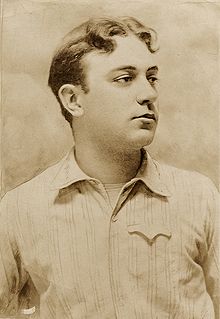Roland Hinton Perry
| Roland H. Perry | |
|---|---|
 |
|
| Born |
January 25, 1870 New York City, New York, U.S. |
| Died | October 27, 1941 (aged 71) New York City, New York, U.S. |
| Resting place |
Gate of Heaven Cemetery 41°05′45″N 73°47′40″W / 41.095697°N 73.794546°W |
| Notable work |
Elk (1900) Commonwealth (1905) |
Roland Hinton Perry (January 25, 1870 – October 27, 1941) was an American sculptor and painter.
Perry was born in New York City to George and Ione Hinton Perry, and entered the École des Beaux Arts in 1890 at the age of 19. At 21, he studied at the Académie Julian and Académie Delécluse in Paris and focused on sculpture, the medium in which he would achieve the most artistic success.
After returning to the United States, Perry received a commission to sculpt a series of bas-reliefs for the Library of Congress in Washington, D.C. in 1894. The following year, he was commissioned to create the Court of Neptune Fountain in front of the Library's main building, now known as the Thomas Jefferson Building.
The success of this work in Washington led to other commissions including a design for the statue of Commonwealth on top of the dome of Pennsylvania's new Capitol Building in 1905. He also created the spandrels on the temporary Dewey Arch in New York City (1899), Elk standing in the Plaza Blocks of downtown Portland, Oregon (1900), interior reliefs for the New Amsterdam Theater in New York City, (1903), statues of Dr. Benjamin Rush in Washington and of General George S. Greene at Gettysburg Battlefield (both 1904), the Perry Lions on the Connecticut Avenue Bridge in Washington (1906), a figural group atop Lookout Mountain in Chattanooga, Tennessee (1907), and a monument to the Thirty-Eighth Infantry in Syracuse, New York (1920).
...
Wikipedia
